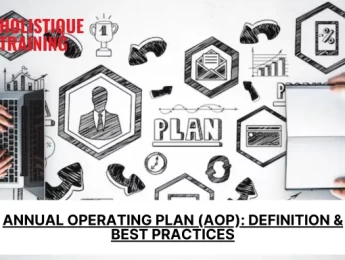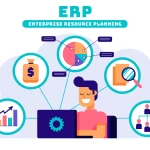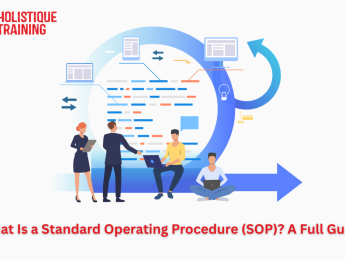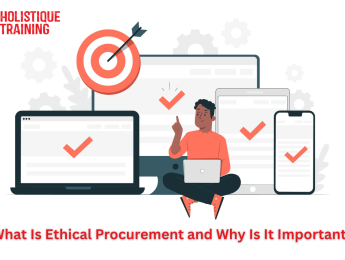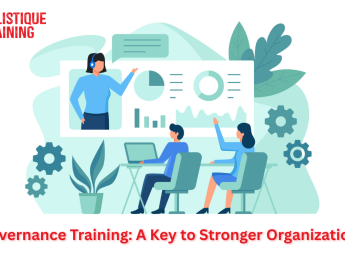- Table of Contents
- Introduction
- What Is an Annual Operating Plan (AOP)?
- What Does the AOP Include?
- a) Strategic Goals and Objectives
- b) Financial Projections
- c) Operational Plans
- d) Resource Allocation
- e) Key Performance Indicators (KPIs)
- When Should You Create an Annual Operating Plan?
- Why Is an Annual Operating Plan Important?
- Strategic Alignment
- Resource Optimisation
- Risk Mitigation
- Communication Tool
- Performance Evaluation
- Step-by-step Guide for Creating an Annual Operating Plan
- 1- Review the Previous Year
- 2- Set Clear Objectives
- 3- Conduct Market Analysis
- 4- Financial Projections
- 5- Operational Plans
- 6- Resource Allocation
- 7- Key Performance Indicators (KPIs) and Benchmarks
- 8- Contingency Planning
- 9- Stakeholder Communication
- 10- Regular Review and Adaptation
- Annual Operating Plan Best Practices
- 1- Cross-Functional Collaboration
- 2- Data-Driven Decision Making
- 3- Flexibility
- 4- Communication and Training
- 5- Regular Monitoring and Reporting
- 6- Scenario Planning
- 7- Long-Term Perspective
- 8- Employee Involvement
- 9- Quality Over Quantity
- 10- Learn from Feedback
- Budget & AOP: What’s the Difference?
- Measuring the Effectiveness of an Annual Operating Plan
- a) Goal Achievement
- b) Financial Performance
- c) Operational Efficiency
- d) Adaptability
- e) Stakeholder Satisfaction
- f) Comparison with Industry Benchmarks
- g) Operational KPIs
- h) Employee Engagement and Satisfaction
- i) Customer Metrics
- j) Learning and Improvement
- The Role of Technology in AOPs
- Data Analytics
- Collaboration Platforms
- Automation
- Cloud Computing
- Performance Management Systems
- Artificial Intelligence (AI) and Machine Learning (ML)
- Workflow Management Tools
- Integration with Financial Systems
- Predictive Analytics
- Cybersecurity Measures
- Conclusion
Introduction
Imagine navigating a ship without a map, setting out into the vast ocean with no destination in sight. The result? Chaos, confusion, and a high likelihood of veering off course. An organisation without a strategic roadmap faces a similar fate in business. Enter the Annual Operating Plan (AOP), a meticulously crafted guide that serves as a compass for businesses, steering them towards success in the ever-changing seas of the market.
What Is an Annual Operating Plan (AOP)?
At its core, an Annual Operating Plan is the heartbeat of an organisation's strategic planning. It's a comprehensive document that outlines the company's objectives, priorities, and financial goals for the upcoming year. It is a dynamic roadmap, carefully charted to guide decision-making and resource allocation.
What Does the AOP Include?
The AOP is not a one-size-fits-all document; it's a tailored blueprint reflecting the uniqueness of each organisation. Generally, it comprises several key components:
a) Strategic Goals and Objectives
At the heart of the AOP are the strategic goals and objectives that chart the course for the organisation. These are vague aspirations and concrete, measurable targets that align with the broader mission and vision. Whether it's expanding market share, launching new products, or improving customer satisfaction, this section crystallises the big-picture ambitions that will guide decision-making across the organisation.
b) Financial Projections
The financial component of the AOP is akin to the monetary engine that powers the organisation's journey. It involves meticulous projections of anticipated revenues, costs, and profits. This financial roadmap is a compass for fiscal decision-making, helping organisations allocate resources judiciously to ensure financial health and sustainability.
c) Operational Plans
While strategic goals set the destination, operational plans outline the nitty-gritty details of the journey. This section drills down into the day-to-day operations required to bring strategic objectives to fruition. It may involve outlining key projects, assigning responsibilities, and detailing processes that need refinement or implementation.
d) Resource Allocation
No journey can be successful without efficient resource management. The AOP specifies how human and financial resources will be allocated across various initiatives. This involves determining staffing levels, budget allocations for different departments, and ensuring that resources are deployed in alignment with strategic priorities.
e) Key Performance Indicators (KPIs)
The AOP isn't just a roadmap; it's also a navigation system equipped with performance metrics. KPIs are quantifiable measures that allow organisations to gauge their progress and success. Whether it's sales targets, customer satisfaction scores, or operational efficiency benchmarks, KPIs provide a tangible means of assessing whether the organisation is on track to meet its goals.
KPI Category | Description | Measurement Metric |
Financial Performance | Revenue growth vs. projected targets | Percentage increase in sales |
Operational Efficiency | Project completion against timelines | Percentage of projects on schedule |
Customer Satisfaction | Net Promoter Score (NPS) improvement | Increase in positive customer feedback |
Employee Productivity | Cost per unit produced or serviced | Reduction in operational costs |
Market Share Growth | Market share increase in target segments | Percentage growth in market share |
Table 1: Examples of Key Performance Indicators to Include in an AOP
By weaving these elements together, the AOP becomes a holistic guide that connects strategic vision with practical execution. It transforms abstract goals into actionable plans, ensuring that every facet of the organisation is aligned and working together to achieve success. The synergy of these components makes the AOP not just a document but a living, breathing roadmap that organisations can follow to navigate the complexities of the business landscape.
When Should You Create an Annual Operating Plan?
Timing is crucial when it comes to crafting an Annual Operating Plan. Typically, organisations kick off the AOP process well in advance, often months before the new fiscal year. This allows ample time for research, analysis, and strategic contemplation.
The process often commences with a thorough review of the previous year's performance, extracting valuable lessons and insights. It's a forward-looking exercise that demands a keen understanding of market trends, competitive landscapes, and internal capabilities.
Why Is an Annual Operating Plan Important?
The Annual Operating Plan serves as the North Star for businesses, providing a sense of direction and purpose. Here's why it holds paramount importance:
Strategic Alignment
At its core, the AOP serves as a linchpin for strategic alignment within an organisation. It acts as a unifying force, ensuring that every department, team, and individual is moving in synchrony toward common objectives. This alignment is crucial for maximising efficiency and avoiding the pitfalls of disjointed efforts.
Resource Optimisation
One of the primary functions of the AOP is to act as a guide for resource allocation. By providing a detailed roadmap, it helps organisations allocate resources—both human and financial—effectively. This prevents unnecessary wastage and ensures that every dollar and hour is strategically invested in activities that contribute directly to the organisation's success.
Risk Mitigation
The business landscape is fraught with uncertainties, and the AOP is a proactive shield against potential risks. Organisations can identify and prepare for potential challenges through thorough analysis and scenario planning. This risk mitigation aspect is crucial for maintaining stability and resilience in the face of unforeseen circumstances.
Communication Tool
The AOP is a powerful communication tool that transcends internal boundaries. It clearly communicates the company's vision and objectives to internal stakeholders, fostering a shared understanding of organisational priorities. This clarity is equally essential when dealing with external stakeholders, such as investors, customers, and partners, instilling confidence in the organisation's strategic direction.
Performance Evaluation
An AOP is not a static document; it's a dynamic tool that facilitates ongoing performance evaluation. Organisations can systematically assess their progress throughout the year by establishing benchmarks and Key Performance Indicators (KPIs). This not only enables them to celebrate successes but also to identify areas that require course correction.
A comprehensive 2010 study, cited by Bplans, that synthesised data from 11,046 companies indicated that planning significantly enhanced business performance. Notably, the study revealed that established companies derived even greater benefits from planning than their startup counterparts.
The AOP, therefore, serves as a dynamic compass that guides organisations through the ever-changing business landscape. It's a proactive tool fostering adaptability and resilience, allowing businesses to navigate challenges strategically. In essence, the importance of an AOP lies in its ability to transform strategic intent into actionable plans, aligning the entire organisation and equipping it to thrive amidst uncertainty. It's not just a document; it's the cornerstone of organisational agility and success.
Step-by-step Guide for Creating an Annual Operating Plan
Creating an effective AOP involves a systematic approach. Here's a step-by-step guide to crafting a blueprint for success:
1- Review the Previous Year
The journey begins with a retrospective analysis of the previous year. Evaluate the successes, shortcomings, and lessons learned. This introspection provides valuable insights that inform the strategic planning for the upcoming year.
2- Set Clear Objectives
Define clear and measurable objectives aligning with the organisation's mission and vision. These objectives should be specific, realistic, and achievable within the upcoming year, serving as the foundation for the AOP.
3- Conduct Market Analysis
To navigate the business landscape effectively, conduct a thorough analysis of market trends, customer behaviour, and the competitive landscape. This step ensures the AOP is grounded in a nuanced understanding of the external environment.
4- Financial Projections
Develop detailed financial projections encompassing revenue, costs, and profitability. These projections provide a financial roadmap, guiding resource allocation and ensuring the organisation remains on a sustainable financial trajectory.
5- Operational Plans
Translate strategic goals into actionable plans by outlining the day-to-day operations required for goal attainment. This involves identifying key projects, assigning responsibilities, and detailing the processes that support the execution of the strategic plan.
6- Resource Allocation
Efficiently allocate resources, considering both human capital and financial investments. Ensure that resources are distributed and aligned with strategic priorities, maximising their impact on goal achievement.
7- Key Performance Indicators (KPIs) and Benchmarks
Define Key Performance Indicators (KPIs) that align with the established objectives. These quantifiable metrics serve as benchmarks for monitoring progress throughout the year. They provide a means to gauge the organisation's success and identify areas requiring adjustments.
8- Contingency Planning
Anticipate potential risks and challenges that may arise during the execution of the AOP. Develop contingency plans to mitigate these risks, ensuring the organisation can adapt swiftly to unforeseen circumstances without compromising its objectives.
9- Stakeholder Communication
Clear communication is paramount. Communicate the AOP to internal stakeholders, ensuring every team member understands their role in achieving the outlined objectives. External communication may involve sharing key aspects of the AOP with investors, customers, and other relevant parties.
10- Regular Review and Adaptation
The AOP is not a static document; it requires continuous monitoring and adaptation. Regularly review the organisation's performance against the plan, identify areas of success and improvement, and be prepared to adapt strategies in response to changing circumstances.
Organisations can create a robust and dynamic Annual Operating Plan by systematically following these steps. This iterative and collaborative approach ensures that the AOP serves not only as a roadmap but also as a living guide that can navigate the organisation through the complexities of the business landscape.
Annual Operating Plan Best Practices
Optimising the effectiveness of your Annual Operating Plan (AOP) involves more than just following a set of steps. It requires adopting best practices that ensure the AOP is well-crafted and adaptable to the dynamic nature of business. Here are key best practices to enhance the value of your AOP:
1- Cross-Functional Collaboration
Involve key stakeholders from various departments in the AOP process. Cross-functional collaboration ensures that the plan is comprehensive and considers insights from diverse perspectives. This collaboration also fosters a sense of ownership and alignment across the organisation.
2- Data-Driven Decision Making
Base the AOP on solid data and analytics. Leverage data-driven insights to inform strategic decisions and validate assumptions. This enhances the accuracy of projections and ensures that the plan is grounded in a realistic understanding of the market and internal capabilities.
3- Flexibility
While a well-structured AOP provides a roadmap, building flexibility into the plan is essential. Business environments are dynamic, and unforeseen changes are inevitable. Having the ability to adapt the plan in response to new information or market shifts ensures its relevance and effectiveness throughout the year.
4- Communication and Training
Effective communication is crucial for the successful implementation of the AOP. Ensure that all team members understand the AOP, including its objectives, strategies, and their role in achieving the outlined goals. Training sessions may be necessary to educate teams on new processes or initiatives introduced through the AOP.
5- Regular Monitoring and Reporting
Establish a robust system for monitoring progress against the AOP. Regularly track key performance indicators and milestones. Implementing consistent reporting mechanisms allows for timely identification of deviations from the plan and facilitates quick adjustments if needed.
6- Scenario Planning
Consider incorporating scenario planning into the AOP process. Anticipate various potential scenarios and develop corresponding action plans. This proactive approach enhances the organisation's ability to respond swiftly to changes in the business environment.
7- Long-Term Perspective
While the AOP focuses on the upcoming year, it's beneficial to maintain a long-term perspective. Ensure that short-term goals align with the organisation's overarching strategic vision. This coherence prevents the AOP from being a disconnected annual exercise and instead positions it as part of a continuous journey towards sustained success.
8- Employee Involvement
Statistics show that in a goal-driven organisation, employees demonstrate a 6.7-fold increase in pride for their workplace and a 6.5-fold higher likelihood of recommending it as an excellent work environment. Even better if they’re engaged in the goal achievement process, which is why you should engage employees in the AOP process. Solicit their input, ideas, and feedback. This not only harnesses the collective intelligence of the workforce but also fosters a sense of ownership and commitment to the organisation's goals.
9- Quality Over Quantity
While it's tempting to include an exhaustive list of initiatives in the AOP, prioritise quality over quantity. Focus on key strategic priorities that align with the organisation's mission. A concise and well-defined plan is easier to communicate, understand, and execute.
10- Learn from Feedback
Actively seek feedback on the AOP from stakeholders, both internal and external. Use this feedback to improve the planning process continuously. An AOP incorporating lessons learned from previous years is more likely to be adaptive and resilient.
By integrating these best practices into the AOP creation process, organisations can ensure that their annual plans are not only comprehensive but also agile and well-suited to navigate the complexities of the business landscape. This iterative and thoughtful approach contributes to the AOP's effectiveness as a strategic tool for organisational success.
Budget & AOP: What’s the Difference?
While Annual Operating Plans and budgets may seem synonymous, they serve distinct purposes within an organisation. The AOP sets the strategic direction and operational priorities, while the budget is a financial plan that aligns with the AOP. In essence, the AOP answers "what" and "why," while the budget answers "how much" and "how."
The AOP informs the budget, guiding the allocation of financial resources to support the strategic objectives outlined in the plan. The budget, in turn, provides the financial framework for the organisation to execute the AOP effectively.
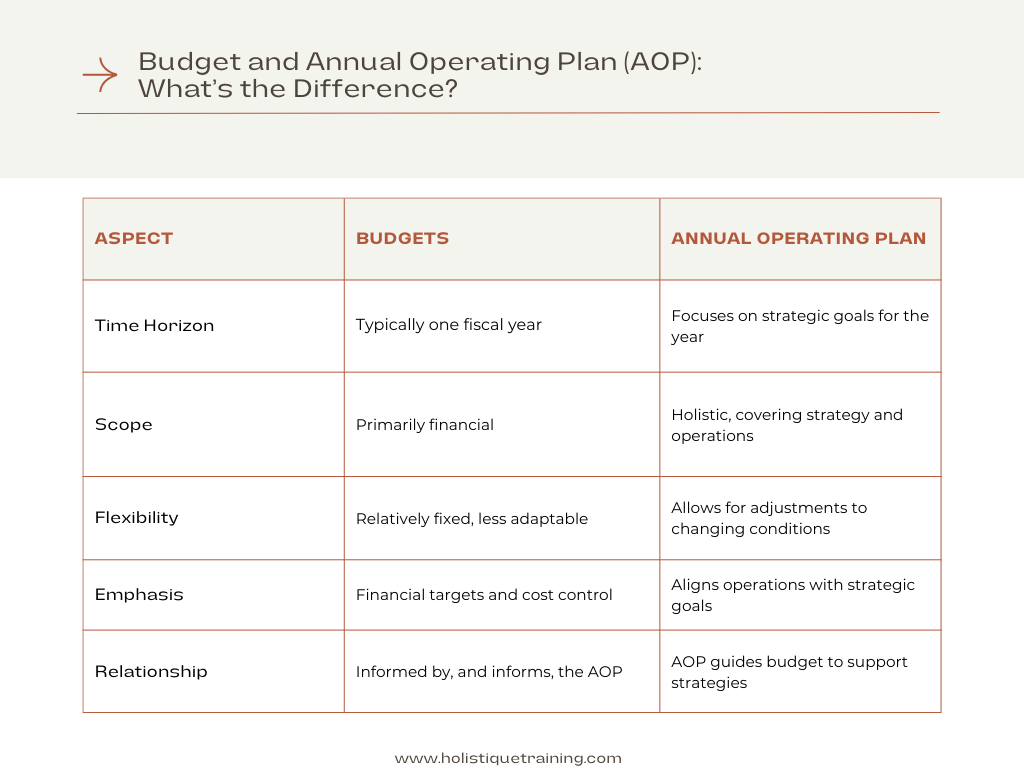
Measuring the Effectiveness of an Annual Operating Plan
A well-crafted AOP is not a static document; its effectiveness lies in adapting and guiding the organisation to success. Here's how you can measure its impact:
a) Goal Achievement
The primary yardstick for assessing AOP effectiveness is the degree to which the organisation achieves its strategic goals and objectives. Compare the actual outcomes with the targets set in the plan. This evaluation provides a clear indication of whether the organisation was successful in translating its strategic intent into tangible results.
b) Financial Performance
Evaluate the financial performance against the projections outlined in the AOP. Analyse key financial metrics such as revenue, expenses, and profitability. Assessing the accuracy of financial projections helps gauge the effectiveness of the organisation's financial planning and resource allocation.
c) Operational Efficiency
Examine the efficiency of day-to-day operations against the operational plans outlined in the AOP. This involves assessing whether the organisation effectively executed the planned initiatives, allocated resources efficiently, and managed operational challenges as anticipated.
d) Adaptability
Assess how well the organisation adapted to unforeseen challenges and changes in the business environment. An effective AOP is not rigid but allows for adaptation. Evaluate the organisation's ability to respond to unexpected events and adjust strategies accordingly.
e) Stakeholder Satisfaction
Gauge the satisfaction of both internal and external stakeholders. Internal stakeholders include employees, managers, and executives, while external stakeholders encompass customers, investors, and partners. Assessing stakeholder satisfaction provides insights into the broader impact of the AOP on the organisation's reputation and relationships.
f) Comparison with Industry Benchmarks
Benchmark the organisation's performance against industry standards. This comparative analysis provides context for understanding how well the organisation performed relative to its peers. It helps identify areas where the organisation excelled or fell short compared to industry norms.
g) Operational KPIs
Evaluate the performance of key operational indicators. These could include metrics related to production efficiency, customer service, quality control, or any other operational aspect crucial to the organisation's success. Analysing these KPIs provides a granular view of operational effectiveness.
h) Employee Engagement and Satisfaction
Assess the impact of the AOP on employee engagement and satisfaction. An effective AOP should inspire and motivate employees, aligning their efforts with organisational goals. Employee feedback and surveys can provide valuable insights into how well the AOP resonated with the workforce.
i) Customer Metrics
Measure customer-related metrics such as satisfaction scores, retention rates, and feedback. The AOP should positively influence customer experiences and perceptions. Analysing these metrics helps determine whether the organisation successfully executed strategies aimed at enhancing customer relationships.
j) Learning and Improvement
Evaluate the organisation's ability to learn from the AOP process. Assess whether feedback and insights gained during the year were incorporated into subsequent planning cycles. Continuous improvement based on lessons learned enhances the adaptability and effectiveness of future AOPs.
Regularly reviewing and measuring these aspects provides a comprehensive picture of the AOP's effectiveness. It also facilitates a continuous improvement cycle, where insights gained from the evaluation process contribute to refining future planning efforts. Ultimately, the effectiveness of an AOP is not solely determined by achieving predefined targets but also by the organisation's ability to learn, adapt, and thrive in a dynamic business environment.
The Role of Technology in AOPs
In an era where data is king, technology plays a pivotal role in enhancing the effectiveness of Annual Operating Plans. Here's how:
Data Analytics
Technology empowers organisations to harness the vast amount of data available to them. Advanced analytics tools enable data collection, analysis, and interpretation, providing valuable insights into market trends, customer behaviour, and internal performance. Leveraging data analytics ensures that AOPs are informed by real-time, data-driven intelligence, enhancing the accuracy of projections and strategic decisions.
Collaboration Platforms
AOPs often involve collaboration among multiple stakeholders across different departments and locations. Collaboration platforms and project management tools facilitate seamless communication, document sharing, and real-time collaboration. This ensures that teams work cohesively, even when geographically dispersed, contributing to developing a comprehensive and well-coordinated AOP.
Automation
Automation technologies streamline repetitive and time-consuming tasks associated with the AOP process. Automation frees up valuable strategic thinking and analysis time from data entry to report generation. This efficiency accelerates the AOP development and allows teams to focus on more value-added activities.
Cloud Computing
Cloud-based solutions provide a centralised and accessible platform for AOP development and management. This enhances collaboration and accessibility, as team members can work on the plan in real-time from different locations. Additionally, cloud computing facilitates secure data storage and backups, reducing the risk of data loss and ensuring the availability of critical information.
Performance Management Systems
Technology enables the implementation of performance management systems that allow real-time monitoring of Key Performance Indicators (KPIs). These systems provide dashboards and reports that offer a dynamic and visual representation of organisational performance against AOP targets. This real-time visibility enhances decision-making and allows for quick adjustments to strategies as needed.
Artificial Intelligence (AI) and Machine Learning (ML)
AI and ML technologies can analyse historical data to identify patterns, trends, and potential risks. These insights contribute to more accurate forecasting and scenario planning within the AOP. Additionally, AI-powered algorithms can automate predictive analytics, providing organisations with a forward-looking perspective that aids in strategic decision-making.
Workflow Management Tools
AOPs involve complex workflows with various stages and dependencies. Workflow management tools help organisations structure and automate these processes. These tools ensure that tasks are assigned, tracked, and completed on time, facilitating a smooth and organised AOP development cycle.
Integration with Financial Systems
Technology facilitates the seamless integration of AOPs with financial systems. This integration ensures that financial data is synchronised, reducing the likelihood of errors and discrepancies. It also allows for real-time financial reporting, enabling organisations to monitor their financial performance against AOP projections continuously.
Predictive Analytics
Utilising predictive analytics tools, organisations can forecast future trends and market conditions. This capability enhances the AOP's ability to anticipate challenges and opportunities, enabling organisations to develop more robust and adaptive strategies.
Cybersecurity Measures
As organisations increasingly rely on technology for AOPs, ensuring the security of sensitive data becomes paramount. Robust cybersecurity measures protect against data breaches and unauthorised access, safeguarding the integrity and confidentiality of the AOP.
In short, the role of technology in AOPs is transformative, empowering organisations to navigate the complexities of strategic planning with greater precision and agility. By leveraging technological advancements, businesses can create AOPs that are comprehensive and data-driven and adaptable to the dynamic and evolving nature of the business environment.
Conclusion
In conclusion, the Annual Operating Plan is more than just a document; it's a dynamic blueprint that guides organisations towards their goals. By carefully crafting and continuously adapting this roadmap, businesses can confidently navigate the complexities of the market, steering towards success in an ever-evolving landscape.
Mastering the intricacies of the Annual Operating Plan is pivotal in strategic financial planning. Elevate your expertise with our course, ‘Accounting and Finance for Non-Financial Professionals,’ designed to empower you with the financial acumen essential for crafting and executing dynamic roadmaps. Uncover the secrets to confidently navigating the ever-evolving business landscape and propel your organisation toward unparalleled success. Enrol today to transform financial complexities into strategic advantages!


